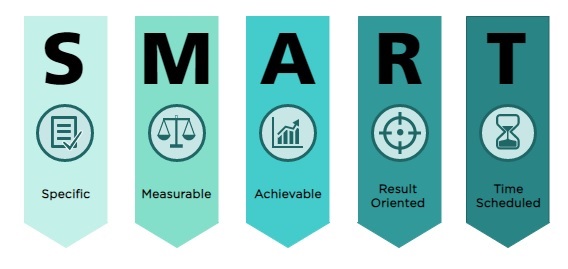Step 4 – Action Planning
Taking action is the most important stage of the safety culture assessment. The way to sustain positive safety culture change is to deliver a sustainable action plan where staff have contributed to the solutions for improvement. A good action plan maps out those steps in a logical and clear way.
There are six key steps to think about when you are developing an action plan:
- Understand the context
- Identify goals
- Clarify who should be involved, who is the responsible lead and what the timeline is for change
- Make the plan
- Implement the plan
- Monitor the plan's progress
It is important for respondents to see that something worthwhile came out of their participation and it will improve the chances for future engagement in other projects. With greater insight into the safety culture, the team or organisation has the ability to make change for improvement.
Developing an Action Plan
The safety culture survey is merely a tool to make change. What is most important is the change for improvement activities that follows the safety culture measurement.
An action plan is an essential part of the safety culture measurement process. It can be used as a checklist for the tasks you need to complete in order to achieve the goals you have set, following review of the survey results and facilitated team discussion.
The aim statement captures the goal of the project. The aim statement must address the problem and must not include any solutions.

- Specific – well-defined and clear
- Measurable – include measurable indicators to track progress
- Achievable –within resources, time, experience, etc. you have
- Results – align with your other goals
- Time bound – has a finishing date
The project's aim must be:
Tips:
- Remember, 'some' or 'better' is not a measure and 'soon' is not a time frame.
- Start small and focus on an individual unit or ward (even if the problem may be more widespread). This will allow you to refine the new processes, demonstrate their impact on practices and outcomes, and build increased support with stakeholders. Then you can consider spreading the initiative to other parts of your service.
- Avoid aim statements that suggest the desired solution to the problem, e.g. to implement the medication guides at your unit/ward.
Tasks/ steps that need to be carried out to reach the goal
It's important to make sure that the entire team is involved in this process. Make sure each task is clearly defined and attainable and a person responsible assigned. If you come across larger and more complex tasks, break them down to smaller ones that are easier to execute and manage.
Brainstorming will give you a better understanding of the problem you are aiming to solve. Without understanding all the causes of a problem, the solutions you generate may not actually lead to an improvement because they are focused on the wrong part of the process, allowing the problem to continue.
People who will be in charge of carrying out each task
Organise the list by prioritising the tasks. Some steps, you may need to prioritize as they can be blocking other sub-steps. Add deadlines, and make sure that they are realistic. Consult with the person responsible for carrying it out to understand his or her capacity before deciding on deadlines.
When will these tasks be completed (deadlines and milestones)
Milestones can be considered mini goals leading up to the main goal at the end. The advantage of adding milestones is that they give the team members to look forward to something and help them stay motivated even though the final due date is far away.
Remember not to keep too little or too much time in between the milestone you set. It's best practice to space milestones two weeks apart.
Resources needed to complete the tasks
Before you start your project, it's crucial to ensure that you have all the necessary resources at hand to complete the tasks. If they are not currently available, you need to first make a plan to acquire them.
Visualize your action plan
The point of this step is to create a plan that everyone can understand at a glance and that can be shared with everyone. Whether your action plan comes in the shape of a flowchart or table, make sure that it clearly communicates the elements identified so far.
This document should be easily accessible to everyone and should be editable.
Measures to evaluate progress
Allocate some time to evaluate the progress you've made with your team.
You can mark tasks that are completed as done on this final action plan, bringing attention to how you've progressed toward the goal. This will also bring out the tasks that are pending or delayed, in which case you need to figure out why and find suitable solutions. And then update the action plan accordingly.
